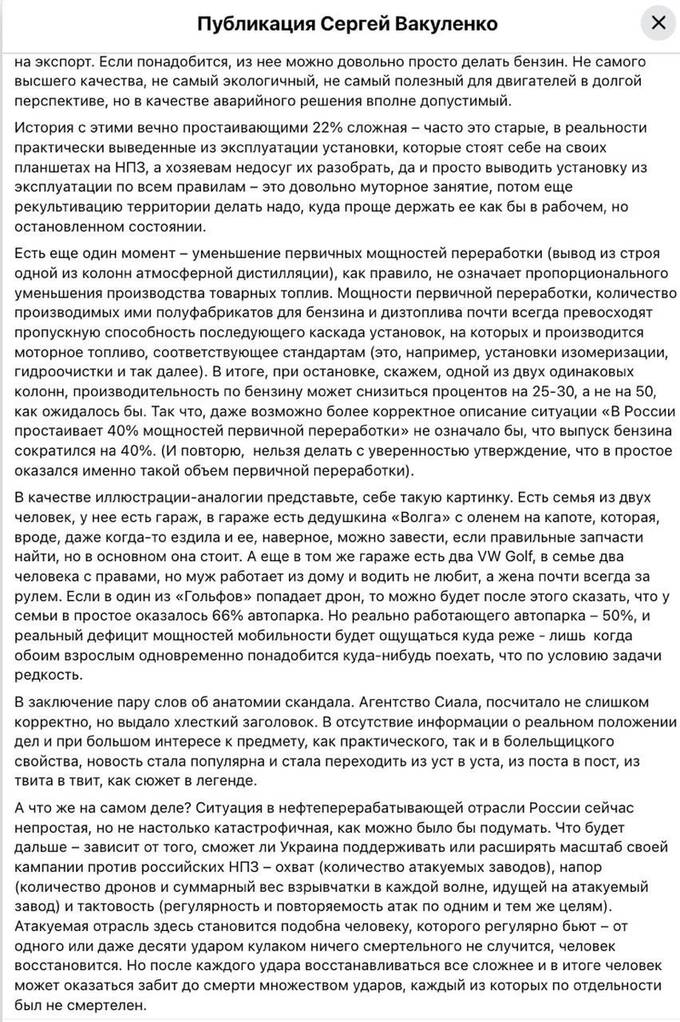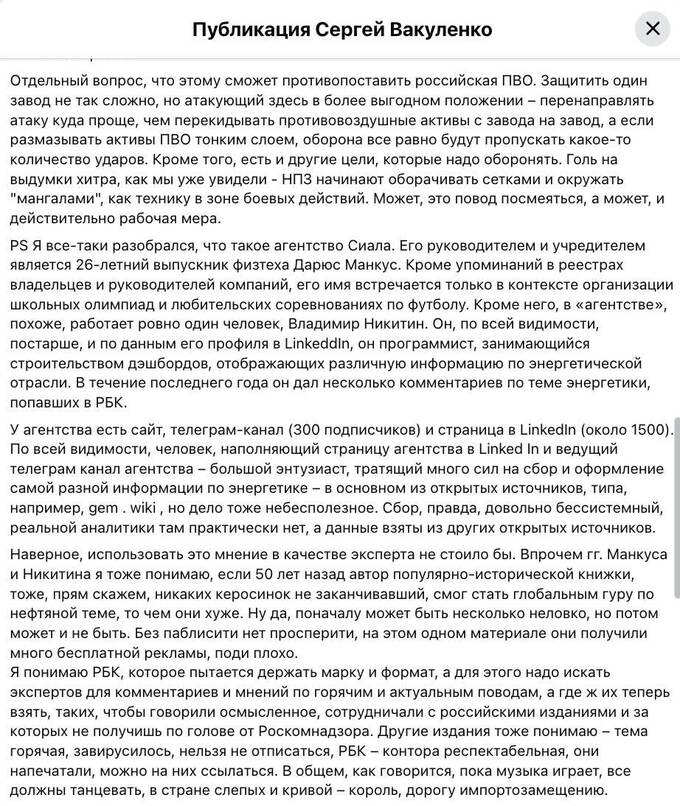
Ukrainian attacks are damaging Russian oil refineries, but the situation is not critical, says expert
In recent days, there has been active discussion about the news that due to attacks from Ukraine, 38% of the capacity of Russian oil refineries is idle.
This information was published by the Russian portal RBC, referencing the data analysis agency "Siala."
However, economist Sergey Vakulenko from the Berlin Carnegie Center points out that this figure is significantly exaggerated and based on incorrect calculation methodology.
In his opinion, this figure can be obtained by adding up the nominal capacities of all the refineries that have been attacked since August and subtracting them from the total capacity. But attacks rarely completely disable a refinery, and some of the damage might have already been repaired. "I think that the refineries are partially damaged, and some have been repaired, so some portion of the lost capacities has already returned to operation," explains Vakulenko.
Furthermore, the expert writes, about 22% of Russia’s refinery capacity remains idle and unloaded. This also makes it impossible to assess the damage from Ukrainian attacks simply by summing up the capacities of damaged refineries.
Vakulenko believes that "the situation is complex, but not as catastrophic as it might seem from the headline ’A little more than half of Russian oil refining remains.’
The expert notes that even with reduced capacities, Russia refines more oil than it consumes and has reserves. "Russia produces almost twice as much diesel as needed for domestic consumption, and 16% more gasoline," the expert emphasizes. In addition, if necessary, some export semi-finished products can be directed to the domestic market.
The problems for Russian refineries have clearly intensified, as the attacks have become more regular (with several strikes on many refineries). But, in his opinion, stating that almost half of the refining has stopped is incorrect.


